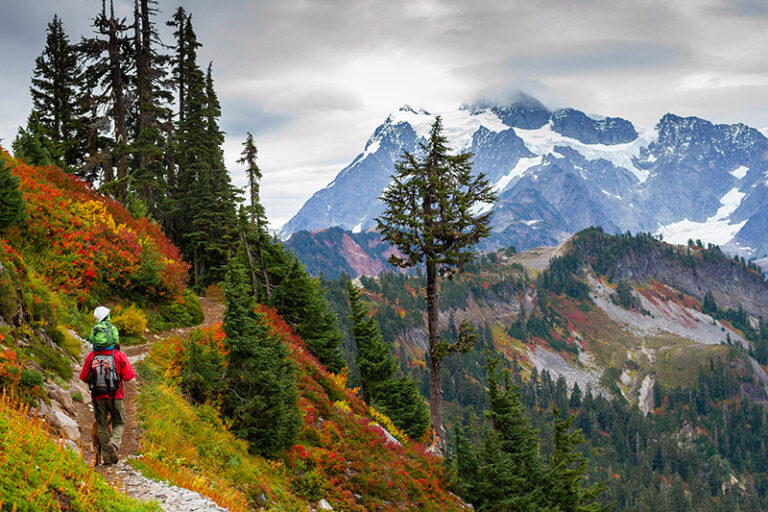By Pete Meighan
Approaching from the north, Eastern Washington’s Blue Mountains appear as little more than inconspicuous rolling hills on the horizon. This outwardly unremarkable appearance belies the spectacular network of deep canyons and tabletop ridges concealed within the Umatilla National Forest. Perhaps the trail that best showcases the dramatic landscapes comprising the Blue Mountains is the ominously named Mount Misery Trail.

The Mount Misery Trail is a 16-mile trail that bisects a northern swath of the Wenaha-Tucannon Wilderness, connecting the Diamond Peak and Teepee trailheads (USFS webpage). The trail meanders along the broad and largely open ridgeline that divides the drainages that feed the Wenaha River to the south and the Tucannon River to the north—the eponyms of the 177,465-acre wilderness area contained within The Blues.
Beginning from the Diamond Peak trailhead on the northeastern corner of the wilderness area, the Mount Misery Trail points west, climbing sharply along Diamond Peak’s forested northern slope. Upon gaining the open ridgeline, you will reach a signed intersection with the Bear Creek trail, which descends to the Tucannon River to the north. From this intersection, peak baggers might be tempted to turn south and follow the unmaintained path to the summit of Diamond Peak—the second highest peak in The Blues at 6,379 feet—before continuing west along the Mount Misery Trail.

After Diamond Peak, the trail descends slightly to a saddle and a junction with the Melton Creek Trail, which winds steeply into the Chapperal Basin to the south, ultimately connecting with the Crooked Creek Trail. This might be an attractive side trip for those tempted to plunge deeper into the Wenaha-Tucannon Wilderness or perhaps be taken as one of several long-distance looping options that incorporate the Mount Misery Trail. In either case, water can usually be collected from the nearby Diamond Spring before proceeding.
The trail undulates along open ridgelines and saddles forested with groves of pine and fir trees before reaching Sheephead Spring and the first of several excellent campsites along the trail (approximately 2.5 miles from the start). You can either set up camp here, or journey approximately 1 mile further to another spring near the next developed campsite. While taking a moment to refresh your water supply from the reliable spring, venture up to the nearby ridgeline to enjoy impressive views into the central canyons of the Wenaha-Tucanon Wilderness. From this vantage point, the long distinctive ridgeline of Oregon Butte—the tallest peak in the Washington Blue Mountains—looms in the distance. With a careful eye, you can spot the Oregon Butte Lookout station, perched nearly 4,000 feet above the network of canyons below.

From Sheephead Spring, the trail veers north to skirt the headwaters of Crooked Creek before arching back westward towards an expansive array of broad ridgelines comprising Indian Coral. There are multiple camping options and a reliable spring in Indian Coral, which is often used by hikers from the Panjab trailhead as a staging area for a summit trip to Oregon Butte.
After visiting Oregon Butte, you can complete the last few miles of the Mount Misery Trail to the Teepee trailhead, where resourceful hikers might have a shuttled vehicle awaiting them. Or simply retrace your steps back to the Diamond Peak trailhead.
Editor’s Note: Be sure to Recreate Responsibly during the COVID-19 pandemic. Here is guidance provided by Washington Trails Association, “Hiking in the Time of Coronavirus.”













